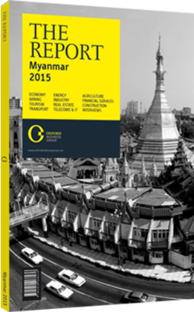Discrepancies in data on trade volumes have many causes
Two things are clear about Myanmar’s international trade: it is growing, and fast. By just how much is less certain – sources vary widely in their estimates, and even the best data available have obvious holes.
Myanmar’s trade figures, published by the Central Statistical Organisation (CSO), show merchandise imports rocketing upward in recent years, from $4.2bn in FY 2009 to $13.8bn in FY 2013 (running from April 1 of same-numbered calendar years). Other countries likewise report a spike in trade with Myanmar, but differ on its scale.
According to UN Comtrade, which collects trade data from most of the world’s governments, total reported goods exports to Myanmar leapt from $6.5bn in 2009 to $18.7bn in 2013. The IMF’s Direction of Trade Statistics (DOTS), a similar database, shows them swelling from $7.1bn to $20.3bn.
Borders
The discrepancy lies mainly in trade with China and Thailand. In FY 2013, Myanmar reported imports of $4.1bn from China and $1.4bn from Thailand, yet China logged $7.3bn of exports to Myanmar and Thailand $3.8bn. Why the difference?
Chinese and Thai goods entering Myanmar are mostly recorded at Customs checkpoints just before reaching the border. The far lower counts of goods recorded by Myanmar authorities on the other side, therefore, appear to indicate weak government control over official border crossings, as datasets from other major trade partners generally concur – Singapore reported $2.2bn of imports to Myanmar in 2013 and Japan $1.1bn, according to UN Comtrade.
On Myanmar’s own exports, data from the three sources look fairly similar. Between 2009 and 2013, Comtrade shows them rising from $6.1bn to $10.8bn; DOTS from $5.9bn to $10.4bn; and CSO from $7.6bn to $11.2bn. The spike was fuelled by exports to China, which grew from $646m to $2.9bn, as UN Comtrade records of Chinese data reveal.
While all sources show imports growing faster than exports, UN Comtrade and DOTS data paint a seemingly alarming growth of merchandise trade deficits, reaching $7.9bn in 2013 according to the former and $9.9bn according to the latter. Even with the recent upswing in foreign investment, such large deficits would be impossible for Myanmar to finance.
Mind The Gap
Something is missing from the data. Clearly, exports in all the available figures are substantially understated. All sources appear to ignore most of Myanmar’s exports of precious stones, mainly jade and rubies. Trade partners, dominated by China, logged imports of precious stones from Myanmar worth $1.2bn in 2013, according to UN Comtrade, while the CSO counted Myanmar’s exports of jade alone at $1bn in fiscal year 2013. Yet according to official announcements reported by news media, $2.4bn of jade and gems were sold at the government’s largest precious stone auction in 2013. At the largest one in 2014, $3.4bn of stones were sold. Nearly all buyers at these auctions are exporters.
Several big gaps are evident. A study led by Harvard Kennedy School economist David Dapice estimated jade output in 2011 at $7.9bn, based on estimates gleaned from insiders of the average value of stones and the portion – about half – said to be smuggled directly from mines out of the country. This does not include rubies or other gemstones, which are likely worth at least $500m a year, though data are scant. The state collects a profit share from miners of precious stones plus a 30% export tax.
The data also omit large-scale smuggling of opiates and methamphetamines, and some smuggling of gold. The UN Office on Drugs and Crime reckons Myanmar farmers produced about an eighth of the world’s opium crop in 2014, earning about $340m. Add the profits of drug labs and traffickers, and illicit drug exports are likely worth over $1bn a year.
Myanmar’s total exports in 2013, therefore, were probably at least $15bn, and possibly as high as $19bn. As for the goods trade balance, there is probably too much uncertainty to make a credible guess.
You have reached the limit of premium articles you can view for free.
Choose from the options below to purchase print or digital editions of our Reports. You can also purchase a website subscription giving you unlimited access to all of our Reports online for 12 months.
If you have already purchased this Report or have a website subscription, please login to continue.

